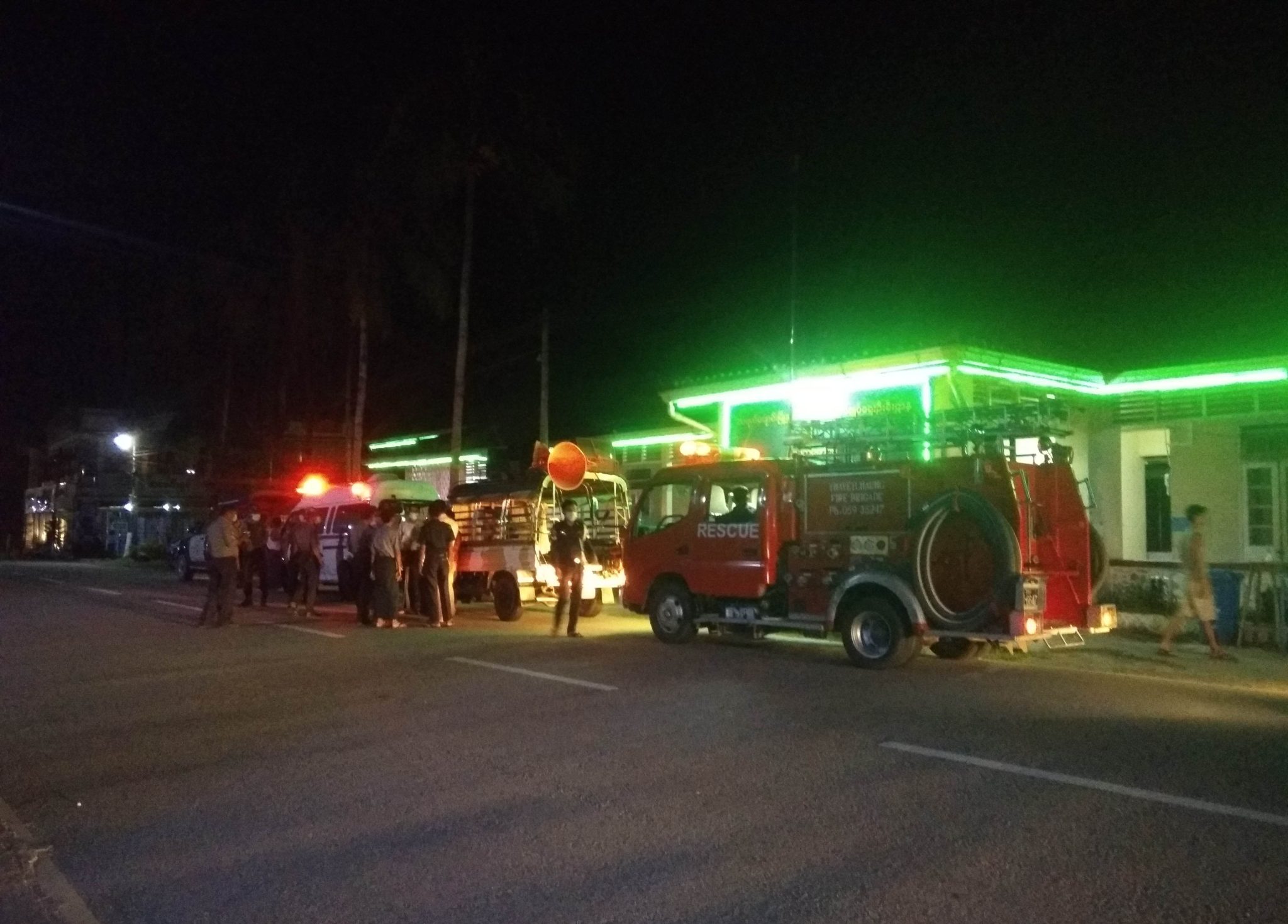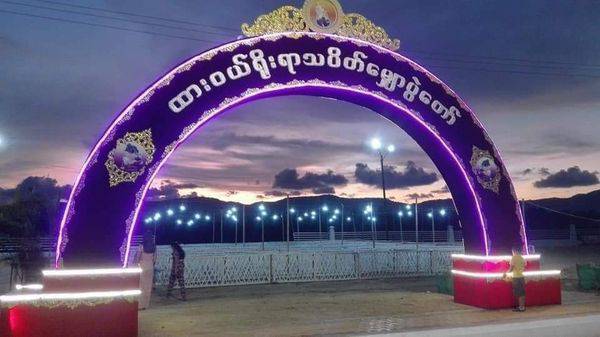
Resistance forces in southern Myanmar’s Tanintharyi Region say they carried out three coordinated attacks on junta targets in Dawei District on Wednesday morning.
Two of the attacks took place in or near the town of Thayetchaung, some 30km south of the regional capital Dawei, while the third incident was reported in Dawei itself.
A police station in Thayetchaung and a security checkpoint just outside of the town were both hit at around 5am, according to a spokesperson for one of the groups involved.
The assault on the police station lasted about 20 minutes and was followed by heavy artillery fire from junta forces stationed nearby, Kyauk Khe, information officer for the Daung Min Operation Force, told Myanmar Now.
“Infantry battalions 403, 404, and 405 have troops about a mile from the police station. They all fired heavy artillery in the direction of the police station, injuring six people in Kyauk Myaung, the ward where it is located,” he said.

The other attack near Thayetchaung occurred at a checkpoint on the Shwegu Bridge, which is on the highway to Dawei, he added. No further details were available at the time of reporting.
The third incident involved an explosive that was detonated on the Kanna Road in Dawei at around the same time as the other two attacks.
The blast targeted the site of a Buddhist ceremony that was to be attended by Tanintharyi Region’s chief minister later that day. No casualties were reported.
“The bomb was just a warning to the military council,” said Kyauk Khe, adding that several groups took part in Wednesday’s operations.

In October of last year, a similar blast was reported at a pavilion set up for the same ceremony in Dawei’s Htalai Htein ward. No group claimed responsibility for that attack, but pro-junta Telegram channels said it was carried out by resistance forces targeting civilians. The regime did not release any casualty figures at the time.
According to local media outlet Dawei Watch, the Shwegu Bridge checkpoint was also targeted by anti-junta groups in April and June of this year.
There has been almost daily fighting for several months between regime and resistance forces on Route 8, a highway linking Dawei to the city of Myeik in Tanintharyi’s far south that is important for border trade with neighbouring Thailand.
On Tuesday, anti-regime groups based in Tanintharyi, Palaw, and Kyunsu townships in southern Tanintharyi said they attacked a base operated by the military-backed Pyu Saw Htee militia in Min Gote, a village in Kyunsu Township.
Early the next day, the Tanintharyi Township People’s Defence Force (PDF) intercepted an army column as it was leaving the village of Zawei, according to a statement released by the group.
Late last month, junta troops executed three civilians who had been captured for use as human shields in Padauk Kyi, a village in Thayetchaung Township.
The military has also been using naval vessels to shell coastal villages in southern Tanintharyi. The regime recently announced that the army and navy would be conducting three days of marine exercises near Myeik starting from November 7.
